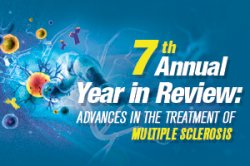 Feeling the Burn - The Pharmacist's Role in Treating Dry Eye- Dry eye disease is a common ocular condition affecting millions of Americans. With this condition, there is most often an insufficient amount of tears to lubricate and nourish the eye. Tears are essential for ensuring the health of the front surface of the eye and maintaining clear vision. Dry eye can cause irritation and lead to complications of the ocular surface, thus appropriate diagnosis and treatment is essential. Topical treatment includes numerous over the counter drops as well as prescription medications. A majority of the patients have milder or episodic symptoms, which will respond to the over-the-counter artificial tear supplements. Since patients frequently self-treat, pharmacists should have an understanding of the symptoms and treatments for dry eye and be prepared to discuss treatment options with patients who do not adequately respond to artificial tears. This program not only gives the pharmacist a solid knowledge base to make appropriate treatment recommendations for patients presenting wi th the signs and symptoms of dry eye but also identifies the point when a timely referral to an eye care specialist is appropriate.
Review the basics of dry eye including symptoms and causes.
Describe the FDA approved over-the-counter and prescription medications available to treat dry eye disease to include mechanism of action and side effects.
Outline key considerations regarding appropriate over-the-counter or prescription treatment and/or for referring patients to an eye care provider when appropriate.
Feeling the Burn - The Pharmacist's Role in Treating Dry Eye- Dry eye disease is a common ocular condition affecting millions of Americans. With this condition, there is most often an insufficient amount of tears to lubricate and nourish the eye. Tears are essential for ensuring the health of the front surface of the eye and maintaining clear vision. Dry eye can cause irritation and lead to complications of the ocular surface, thus appropriate diagnosis and treatment is essential. Topical treatment includes numerous over the counter drops as well as prescription medications. A majority of the patients have milder or episodic symptoms, which will respond to the over-the-counter artificial tear supplements. Since patients frequently self-treat, pharmacists should have an understanding of the symptoms and treatments for dry eye and be prepared to discuss treatment options with patients who do not adequately respond to artificial tears. This program not only gives the pharmacist a solid knowledge base to make appropriate treatment recommendations for patients presenting wi th the signs and symptoms of dry eye but also identifies the point when a timely referral to an eye care specialist is appropriate.
Review the basics of dry eye including symptoms and causes.
Describe the FDA approved over-the-counter and prescription medications available to treat dry eye disease to include mechanism of action and side effects.
Outline key considerations regarding appropriate over-the-counter or prescription treatment and/or for referring patients to an eye care provider when appropriate.1.0 Free CEUs for Pharmacists and Pharmacy Techs
Expires 6/20/17










